Coral Springs, Florida Blood Testing Facilities
 Represents a LabCorp blood testing facility
Represents a LabCorp blood testing facility Represents a Quest Diagnostics blood testing facility
Represents a Quest Diagnostics blood testing facility
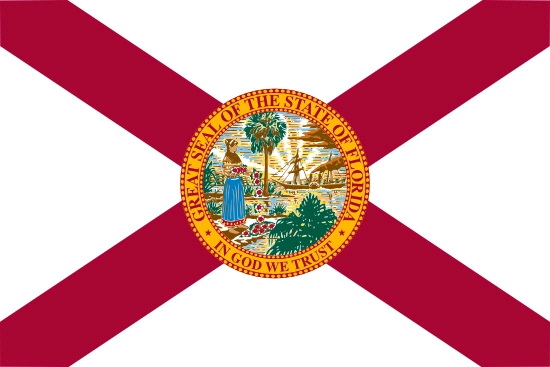
Nearby Labcorp Blood Testing facilities:
- Labcorp Center Distance: 0 m, 9750 Nw 33Rd St Ste 206, Coral Springs, Broward County, FL, 33065
- Labcorp Center Distance: 4 m, 7431 N University Dr Ste 209, Tamarac, Broward County, FL, 33321
- Labcorp Center Distance: 8 m, 7301 W. Palmetto Pk Rd Ste101b, Boca Raton, Palm Beach County, FL, 33433
- Labcorp Center Distance: 9 m, 1855 W Hillsboro Blvd, Deerfield Beach, Broward County, FL, 33442
- Labcorp Center Distance: 10 m, 7061 Cypress Rd Ste 101, Plantation, Broward County, FL, 33317
- Labcorp Center Distance: 11 m, 830 E Oakland Park Blvd Ste121, Oakland Park, Broward County, FL, 33334
- Labcorp Center Distance: 12 m, 801 Meadows Road Ste 117, Boca Raton, Palm Beach County, FL, 33486
- Labcorp Center Distance: 14 m, 16205 S Military Trl Walmart, Delray Beach, Palm Beach County, FL, 33484
- Labcorp Center Distance: 15 m, 5175 W. Atlantic Ave. Ste D, Delray Beach, Palm Beach County, FL, 33484
- Labcorp Center Distance: 17 m, 601 N. Congress Ave. Ste 416, Delray Beach, Palm Beach County, FL, 33445
- Labcorp Center Distance: 18 m, 11135 S Jog Road Ste 4, Boynton Beach, Palm Beach County, FL, 33437
- Labcorp Center Distance: 19 m, 17901 Nw 5 St 104 105, Pembroke Pines, Broward County, FL, 33029
- Labcorp Center Distance: 21 m, 709 S. Federal Hwy. Suite D-4, Boynton Beach, Palm Beach County, FL, 33435
- Labcorp Center Distance: 23 m, 6169 Jog Rd Ste A13, Lake Worth, Palm Beach County, FL, 33467
- Labcorp Center Distance: 26 m, 7150 W 20Th Ave Ste 213, Hialeah, Miami-Dade County, FL, 33016
- Labcorp Center Distance: 28 m, 4368 Forest Hill Blvd, West Palm Beach, Palm Beach County, FL, 33406
- Labcorp Center Distance: 32 m, 400 Arthur Godfrey Road 510, Miami, Miami-Dade County, FL, 33140
- Labcorp Center Distance: 35 m, 4601 N Congress Ave, West Palm Beach, Palm Beach County, FL, 33407
- Labcorp Center Distance: 36 m, 2720 Sw 97 Ave Stes 204 205, Miami, Miami-Dade County, FL, 33165
- Labcorp Center Distance: 38 m, 4595 Northlake Blvd Suite 102, Palm Beach Gardens, Palm Beach County, FL, 33410
- Labcorp Center Distance: 39 m, 7000 Sw 62 Avenue Suite 570, Miami, Miami-Dade County, FL, 33143
- Labcorp Center Distance: 40 m, 3385 Burns Road Ste 205, Palm Beach Gardens, Palm Beach County, FL, 33410
- Labcorp Center Distance: 41 m, 9950 Sw 107 Ave Ste 203, Miami, Miami-Dade County, FL, 33176
- Labcorp Center Distance: 44 m, 600 University Blvd. Ste 102, Jupiter, Palm Beach County, FL, 33458
- Labcorp Center Distance: 46 m, 901 W Indiantown Rd Ste 110, Jupiter, Palm Beach County, FL, 33458
- Labcorp Center Distance: 48 m, 10720 Caribbean Blvd Ste 430, Cutler Bay, Miami-Dade County, FL, 33189
- Labcorp Center Distance: 55 m, 2826 Ne 8 St Ste B-13, Homestead, Miami-Dade County, FL, 33033
- Labcorp Center Distance: 63 m, 858 Sw Federal Hwy, Stuart, Martin County, FL, 34994
- Labcorp Center Distance: 70 m, 9196 S Us Highway 1, Port Saint Lucie, St Lucie County, FL, 34952
- Labcorp Center Distance: 76 m, 1101 N Parrott Ave Ste 101, Okeechobee, Okeechobee County, FL, 34972
- Labcorp Center Distance: 80 m, 4162 Okeechobee Rd Ste 74, Fort Pierce, St Lucie County, FL, 34947
- Labcorp Center Distance: 90 m, 3020 Lee Blvd Ste 8, Lehigh Acres, Lee County, FL, 33971
- Labcorp Center Distance: 91 m, 1715 Heritage Trl Ste 201202, Naples, Collier County, FL, 34112
- Labcorp Center Distance: 92 m, 2700 Immokalee Rd Ste 23, Naples, Collier County, FL, 34110
- Labcorp Center Distance: 94 m, 10020 Coconut Rd Ste 124, Estero, Lee County, FL, 34135
- Labcorp Center Distance: 96 m, 955 37Th Place, Vero Beach, Indian River County, FL, 32960
- Labcorp Center Distance: 97 m, 227 Us Hwy 27 South, Lake Placid, Highlands County, FL, 33852
- Labcorp Center Distance: 99 m, 14131 Metropolis Ave Ste 102, Fort Myers, Lee County, FL, 33912
Nearby Quest Blood Testing facilities:
- Quest Center Distance: 10 m, 898A North Federal Hwy, Pompano Beach, Broward County, FL, 33062-4313
- Quest Center Distance: 14 m, 4900 Linton Blvd., Delray Beach, Palm Beach County, FL, 33445-6505
- Quest Center Distance: 18 m, 10151 Enterprise Center Blvd, Boynton Beach, Palm Beach County, FL, 33437-3761
- Quest Center Distance: 19 m, 17900 Nw 5Th Street, Pembroke Pines, Broward County, FL, 33029-2811
- Quest Center Distance: 21 m, 110 N Federal Hwy., Hallandale Beach, Broward County, FL, 33009-4300
- Quest Center Distance: 23 m, 100 Nw 170Th St, North Miami Beach, Miami-Dade County, FL, 33169-5510
- Quest Center Distance: 32 m, 333 41St St, Miami Beach, Miami-Dade County, FL, 33140-3608
- Quest Center Distance: 33 m, 1050 Nw 14Th St, Miami, Miami-Dade County, FL, 33136-1005
- Quest Center Distance: 35 m, 2051 45Th Street, West Palm Beach, Palm Beach County, FL, 33407-2027
- Quest Center Distance: 36 m, 13808 Sw 8Th St., Miami, Miami-Dade County, FL, 33184-3032
- Quest Center Distance: 37 m, 380 S Main St, Belle Glade, Palm Beach County, FL, 33430-3428
- Quest Center Distance: 40 m, 9521 South Dixie Highway, Pinecrest, Miami-Dade County, FL, 33156-2703
- Quest Center Distance: 43 m, 12554 Sw 120Th St., Miami, Miami-Dade County, FL, 33186-9041
- Quest Center Distance: 46 m, 175 Toney Penna Dr., Jupiter, Palm Beach County, FL, 33458-5747
- Quest Center Distance: 63 m, 900 E Ocean Blvd, Stuart, Martin County, FL, 34994-3503
- Quest Center Distance: 69 m, 1400 South East Goldtree Dr, Port St Lucie, St Lucie County, FL, 34952-7563
- Quest Center Distance: 72 m, 1010 Sw Saint Lucie West Blvd, Port St Lucie, St Lucie County, FL, 34986-1718
- Quest Center Distance: 76 m, 212 Ne 19Th Dr, Okeechobee, Okeechobee County, FL, 34972-1932
- Quest Center Distance: 78 m, 2940 S Us Highway 1, Fort Pierce, St Lucie County, FL, 34982-8141
- Quest Center Distance: 90 m, 3400 Lee Blvd, Lehigh Acres, Lee County, FL, 33971-1309
- Quest Center Distance: 94 m, 9550 Bonita Beach Rd, Bonita Springs, Lee County, FL, 34135-4517
- Quest Center Distance: 96 m, 1050 37Th Place, Vero Beach, Indian River County, FL, 32960-4897
- Quest Center Distance: 97 m, 129 Tower St, Lake Placid, Highlands County, FL, 33852-6836
Florida Hormone Replacement Therapy Services
The Conscious Evolution Institute is one of the premier Hormone Restoration Clinics in the United States and proudly serves the entire state of Florida, as well as every county in the United States. If you are a man or woman over the age of thirty and are interested in the benefits that Hormone Replacement Therapy can provide, we can answer all of your questions, and provide the blood testing and medical diagnosis necessary to help you learn whether HRT Therapy is right for you!
Florida HGH Injection Therapy
Human Growth Hormone Deficiency is a significant medical condition that afflicts many in the United States. As we age, our bodies produce Natural HGH less efficiently over time, and our bodies start to suffer as a result. Growth Hormone is a vitally important metabolic hormone, and when we don't have enough, the body starts to deteriorate more quickly over time.
If you qualify for Bio-Identical HGH Therapy, we can have HGH Injections shipped straight to your home or office.
Florida Sermorelin Injection Therapy
HGH Injections are not the only effective treatment for HGH Deficiency. Sermorelin Acetate is functionally identical to a hormone produced by the human body known as Growth Hormone-Releasing Hormone, and can safely and effectively restore flagging HGH Production.
Both forms of treatment are highly effective, but Sermorelin Acetate is a bit cheaper, and is available for off-label prescription. Your doctor can help you decide which treatment is best for you!
Florida Low-T Treatments
For men, Testosterone is the primary hormone which supports and stimulates manliness. Most men simply think that Testosterone Replacement Therapy is a treatment for Erectile Dysfunction, but Testosterone is vitally important to a wide variety of physiological processes which support and preserve the healthy function of the male body.
Not only does Testosterone stimulate libido and sexual function, it also encourages enhanced muscle strength and endurance, and many men that suffer from Age-Related Low-T also at increased risk of a number of medical conditions including obesity, diabetes, anxiety and insomnia. Testosterone has also been proven to be a highly effective medical treatment for Menopause and osteoporosis.
Florida HCG Weight Loss Therapy
Not all Hormone Therapy Treatments are used expressly to restore hormone balance, some are actually used as medical treatments. For example, a hormone known as HCG has been clinically shown to be a highly effective weight loss aid, especially when combined with a diet method known as Caloric Restriction.
HCG causes the body to burn calories from fat more effectively, and it also reduces the impact of hunger on the human brain, biologically increasing willpower. HCG Injections are nearly painless and are administered just underneath the skin. HCG Injections make it easier to lose weight, and can result in the loss of more than a pound per day.
Largest Cities in Florida
Jacksonville
Jacksonville is the most populous city in the state of Florida. The city also has the unique status of being the largest city by area in the United States. Jacksonville is located in Northeast Florida. Jacksonville is the home of one professional sports team: The Jacksonville Jaguars. Jacksonville is also home of the annual Gator Bowl, an SEC Football game played between Georgia and Florida.
Jacksonville has a very strong and diverse economy, with major opportunities in a number of different fields, including Insurance, Bio-Tech, banking, manufacturing, and distribution. Bi-Lo, Fidelity National Financial, and CSX Transportation are all based in the city.
Miami
Miami is located on the southern tip of Florida, and is widely recognized as one of the most lavish cities in the United States, along the lines of New York City, Los Angeles, and Las Vegas. Although Jacksonville is the largest city in Florida, Miami is the center of one of the largest metro areas in the United States.
Miami has a large Professional Sports scene, due to its population as well as its importance as a high-class tourist destination. Miami is the home of the Miami Dolphins, the Miami Heat, and the Miami Marlins. Miami has a strong and international economy, and there are many lucrative corporations based in the area, including Burger King, Telemundo, and Carnival Cruise Lines. It is also the home of many corporations' Latin American Headquarters.
Tampa
Tampa, Florida is the third largest city in the state of Florida. Tampa Bay is sometimes referred to as Cigar City, because of its historical importance to the American Cigar Industry. Tampa is one of the wealthiest cities in the southeast, and has experienced a huge influx of Americans moving to the area.
Tampa is home to one of the most successful baseball teams of the early 21st century: The Tampa Bay Rays. Tampa Bay is also the home turf of the Tampa Bay Buccaneers. Tampa has a large military presence because of MacDill Air Force Base.
St. Petersburg
St. Petersburg is the fourth largest city in Florida, and is a sister city that belongs in the same metropolitan area as Tampa, separated by Tampa Bay. St. Petersburg goes by the nickname, The Sunshine City, because of the tremendous amount of sunny and beautiful days experienced by the city. Because of this wonderful weather, and the area's great economy, St. Petersburg is both a popular vacation destination as well as a popular retirement location.
St. Petersburg has a strong economy, although many commute to Tampa Bay to work. Among the largest businesses in St. Petersburg are Bayfront Medical Center, the Home Shopping Network, and Raymond James.
Orlando
Orlando is the fifth most populous city in the state of Florida, but is also one of the premier tourist destinations in the United States. Orlando is, by far, most famous for Disney World, one of the largest amusement parks in America and the world.
Orlando is home to one professional sports team, the Orlando Magic. Although the Atlanta Braves are based in Georgia, they play their home Spring Training games at Walt Disney World Resort. Orlando is also home to the University of Central Florida, home of the Knights and the largest public school in Florida.
All About Coral Springs, Florida Geographic Area
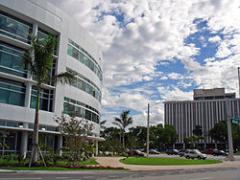


Coral Springs, officially chartered July 10, 1963, is a city in Broward County, Florida, United States, approximately 20 miles (32 km) northwest of Fort Lauderdale. As of the 2010 United States Census, the city had a population of 121,096. It is part of the Miami aeFort Lauderdale aePompano Beach Metropolitan Statistical Area, which was home to 5,564,635 people in 2010.
The city was master-planned and primarily developed by WCI Communities, then known as Coral Ridge Properties, a division of Westinghouse. The city's name is derived from the company's name, and was selected after several earlier proposals had been considered and rejected. Despite the name, there are no springs in the city; Florida's springs are found in the central and northern portions of the state.
During the 1970s, 1980s, and 1990s the young city grew rapidly, adding over 35,000 residents each decade. Coral Springs has a distinctive atmosphere among South Florida cities, due in part to its stringent codes designed to maintain the city's aesthetic appeal. The city government's effective fiscal management has maintained high bond ratings, and the city has won accolades for its overall livability, its low crime rate, and its family-friendly orientation.
Coral Springs is a planned community. Prior to its incorporation as a city in July 1963, the area which is now Coral Springs was part of 20,000 acres (8,100 ha) of marshy lands bought by Henry Lyons between 1911 and 1939. After several floods in 1947, Florida created the Central and Southern Florida Flood Control District (now the South Florida Water Management District). Canals and levees drained much of the area upon which Coral Springs was built. After the land was drained and cleared, most of the area was used as a bean farm. After Lyons' death in 1952, his heirs changed the focus to cattle.
A post-World War II real estate boom in South Florida attracted the interest of developers. Coral Ridge Properties, which already had several developments in Broward County, bought 3,869 acres (16 km2) of land from the Lyons family on December 14, 1961 for $1 million. The City of Coral Springs was chartered on July 10, 1963. Other names that were considered for the new city included "Curran Village", "Pompano Springs" and "Quartermore". By 1964, the company had developed a master plan for a city of 50,000 residents. On July 22, 1964, the first sale of 536 building lots netted $1.6 million. The landmark covered bridge was built that same year to promote the town. In 1965, Coral Ridge Properties bought an additional 6,000 acres (2,400 ha) from the Lyons family; the total land area of Coral Springs increased to 16 square miles (41 km2). The first city government elections were held in 1967.
The city added nineteen public schools, a regional mall, shopping centers and parks during the last three decades of the twentieth century in response to rapid population growth. The construction of the Sawgrass Expressway in 1986 brought even more growth. A museum and a theater opened in the 1990s. The city reached residential build-out in 2003 and is very close to a commercial build-out.
The city's historically low crime rate was marred in the early 1990s, when teen gang violence made headlines, with fights and murders reported. The violence subsided and the city returned to its previously peaceful state in 1995.
Coral Springs was ranked as the 27th best city in the United States in which to live by Money Magazine in 2006; was named the 10th safest city in the US by Morgan Quitno in 2007; and was a multiple recipient of America's Promise "100 Best Cities for Young People" award, identified by the group as a three-time winner in 2008. In 2007, Coral Springs became the first state or local government in the nation to receive the Malcolm Baldrige National Quality Award.
In 2010, CNNMoney.com listed Coral Springs as the 44th best place to live in the United States.
Coral Springs is located at 26 °16 a²14 a³N 80 °15 a²33 a³W / 26.270658 °N 80.259163 °W / 26.270658; -80.259163. According to the United States Census Bureau, the city has a total area of 23.93 square miles (61.98 km2), 22.2 square miles (57.50 km2) of which is land and 1.91 square miles (4.95 km2) of which is water (8.0%). Coral Springs is bordered by the cities of Parkland to the north, Coconut Creek to the east, Margate and North Lauderdale to the southeast and Tamarac to the south. To the west lies The Everglades.
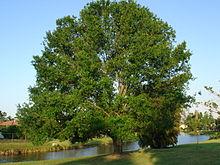
Coral Springs is a sprawling city, with few tall or prominent structures. The tallest building in the city is a 12 story condominium (Country Club Tower), with five more buildings topping out at 10 stories, including three office buildings lining University Drive, one of the city's main roads. Buildings include Preferred Exchange Tower (originally the Bank of Coral Springs Building), 210 Tower, Bank of America Center and the Briarwood Towers.
Coral Ridge Properties established strict landscaping and sign laws for the city aea question in the original version of Trivial Pursuit noted that the city hosted the first McDonald's without the distinctive Golden Arches sign. Restrictions on commercial signs, exterior paint colors, roofing materials, recreational vehicle and boat storage, and landscaping specifications are all strictly enforced; consequently, real estate values in the city are significantly higher than the county as a whole. In 2006, the median price of a single family home in Coral Springs was US$415,000, while the median price county-wide was US$323,000.
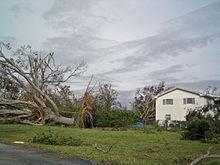
The city aos downtown is the focus of an extensive redevelopment plan, estimated to cost close to US$700 million. The plan to revitalize the city's core started with an open-air shopping and entertainment center ae"The Walk" aeand progressed with the construction of "One Charter Place", opened April 2007. When completed, the redeveloped downtown area will offer office, retail, and a new government center, encompassing approximately three million square feet of floor space, in addition to approximately 1,000 residential units and a new hotel.
The City of Coral Springs' Parks and Recreation Department operates over 50 municipal parks, including a water park and a skate park, encompassing over 675 acres (2.7 km2). Coral Springs' largest park is Mullins Park (70 acres). Of the four conservation areas in the city, Sandy Ridge Sanctuary is the biggest, at 38 acres (150,000 m2).
Average monthly rainfall is higher from April to September, with January and February as the driest months. The average monthly rainfall ranges from 2.8 inches (7 cm) in January and February to 7.3 inches (19 cm) in June. The hurricane season is from June to November, with September as the month during which hurricanes are most likely to occur. The most powerful hurricane to strike Coral Springs since its incorporation was Wilma in 2005; the eye of the hurricane passed directly over the city. The city estimated that "as a result of the numerous hurricanes and storms that hit Coral Springs in 2004/2005, and especially as a result of Hurricane Wilma, the tree canopy coverage throughout the city has been reduced by about one third".
As of 2010, there were 45,433 households, with 8.1% being vacant. As of 2000, 19,151 (43.2%) households had children under the age of 18 living with them, 26,875 (60.6%) were married couples living together, 7,663 (17.3%) had a female householder with no husband present, and 8,387 (18.9%) were non-families. 5,922 of all households (13.4%) were made up of individuals and 1,408 (3.2%) had someone living alone who was 65 years of age or older. The average household size was 3.11 and the average family size was 3.45.
In the city the population was spread out with 38,335 residents (27.8%) under the age of 18, 14,560 (10.5%) from 18 to 24, 35,927 (26.0%) from 25 to 44, 39,821 (28.8%) from 45 to 64, and 9,358 (6.8%) who were 65 years of age or older. The median age was 35.7 years. For every 100 females there were 93.5 males. For every 100 females age 18 and over, there were 85.7 males.
In 2000, the median income for a household in the city was US$69,808, and the median income for a family was $76,106. Males had a median income of $47,427 versus $34,920 for females. The per capita income for the city was $29,285. About 5.8% of families and 7.3% of the population were below the poverty line, including 11.1% of those under age 18 and 2.1% of those age 65 or over.
As of 2000, speakers of English as a first language accounted for 74.6% of residents. Other languages spoken as first languages included Spanish (15.0%), French Creole (2.2%), Portuguese (1.4%), French (1.1%), and Italian (0.8%.)
As of 2000, 2.1% of the city's population was from Haiti, 2.1% of the population was from Colombia, and 1.7% of the population was from Cuba.
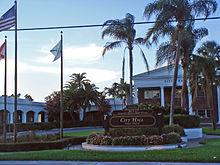
Coral Springs uses the commission-manager form of municipal government, with all governmental powers resting in a legislative body called a commission. Coral Springs' commission is composed of five elected commissioners, one of whom is the mayor of the city and another of whom is the vice-mayor. The mayor and vice-mayor serve a two-year term; the commissioners serve four year terms. The offices are non-partisan; no candidate is allowed to declare a party affiliation. The role of the commission is to pass ordinances and resolutions, adopt regulations, and appoint city officials, including the city manager. While the mayor serves as a presiding officer of the commission, the city manager is the administrative head of the municipal government, and is responsible for the administration of all departments. The city commission holds its regular meetings biweekly. As of 2010, the Mayor is Roy Gold. The Vice-Mayor is Claudette Bruck; the other commissioners are Vince Boccard, Tom Powers and Larry Vignola. The City Manager is Erdal Donmez.
In-city buses are provided free of charge by the local government. Regional transportation is provided by Broward County Transit. The closest passenger airport to Coral Springs is Fort Lauderdale-Hollywood International Airport, located 27 miles (43 km) southeast. The only limited-access highway in Coral Springs is the Sawgrass Expressway (State Road 869), which borders the city on its northern and western edges. Major roads in the city include Atlantic Boulevard, University Drive, and Sample Road.
Coral Springs is served by Broward Health, and is home to the 200-bed Coral Springs Medical Center. The hospital received a 99 (out of 100) from the Joint Commission, ranking in the top 2% of over 9,000 surveyed hospitals.
Coral Springs' water supply comes from the Biscayne Aquifer, South Florida's primary source of drinking water. There are four different water districts within the city; the providers are the City of Coral Springs Water District, Coral Springs Improvement District, North Springs Improvement District and Royal Utilities. The South Florida Water Management District provides flood control protection and water supply protection to local residents, controls all water shortage management efforts and assigns water restrictions when necessary. Collection and disposal of city's trash or garbage is provided by Waste Management. Electric power service is distributed by Florida Power & Light.
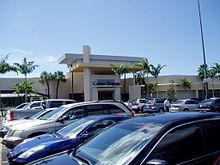
Of residents aged 16 years and over, 72.6% were in the labor force; 95% were employed and 5% unemployed. 39.5% of the population worked in management, professional, and related occupations; 32.9% in sales and office occupations; 12.8% in service occupations; 7.6% in construction, extraction, and maintenance occupations; 7% in production, transportation, and material moving occupations; and 0.1% in farming, fishing, and forestry occupations. The industries for which Coral Springs inhabitants worked were 17.6% educational, health and social services; 16.1% retail trade; 12.9% professional, scientific, management, administrative, and waste management services; 10.1% finance, insurance, real estate, and rental and leasing; 8.2% arts, entertainment, recreation, accommodation and food services; 7.0% manufacturing; 6.6% construction; 5.0% wholesale trade; 4% transportation, warehousing, and utilities;, 4.9% other services (except public administration); 3.7% information; 3.6% public administration; and 0.2% agriculture, forestry, fishing and hunting, and mining. 85.2% of workers worked in the private sector, 9.6% in government, 5% self-employed in unincorporated businesses, and 0.3% as unpaid family workers. The predominant method of commuting was driving alone in own car, accounting for 81.5% of commuting trips, followed by 11.2% who were carpoolers and 7.4% who used other methods or worked from home.
Fitch, Moody's, and Standard & Poor's rate Coral Springs bonds as "AAA". Standard & Poor's, in a 2004 report, noted that Coral Springs had a "vibrant regional economy with above-average wealth levels and consistently low unemployment" and praised the city administration. In 2004, the city's industrial and commercial base represented 24% of the city valuation ae50% higher than the previous decade. The city's tax rate of 3.8715 mils is the lowest in Broward County of cities with more than 70,000 people. The city has twice received the Florida Sterling Award for excellence in administration. First Data and Alliance Entertainment are the largest companies that have offices in the Corporate Park of Coral Springs. ABB Asea Brown Boveri and Royal Plastics Group have subsidiaries headquartered in the city as well. The biggest shopping mall in the city is Coral Square, which opened in October 1984 with 945,000 square feet (87,800 m2) of retail space and more than 120 stores. Preferred Exchange Tower is the tallest and largest office building in the city aeit has 10 floors and 203,000 sq ft (18,900 m2).
According to the 2005 American Community Survey (conducted by the US Census Bureau), 39.2% of all adults over the age of 25 in Coral Springs have obtained a bachelor's degree, as compared to a national average of 27.2% of adults over 25, and 91.7% of Coral Springs residents over the age of 25 have earned a high school diploma, as compared to the national average of 84.2%. Coral Springs had approximately 29,900 students in 2006. Three charter schools offer both primary and secondary education. Higher education is offered by Barry University, Nova Southeastern University and Broward College through a partnership with Coral Springs Charter School.
Public primary and secondary education is handled by the Broward County Public Schools District (BCPSD). The BCPSD operates 3 high schools, 4 middle schools and 12 elementary schools within the city limits. Ramblewood Elementary School received a Florida Sterling Award for its efforts in 2006. In 2008 the Florida Department of Education awarded all public schools in the city except Coral Springs High School "A" grades based on their performance on the Florida Comprehensive Assessment Test; Coral Springs High received a "B" grade, until 2010 when the Coral Springs High received its first "A" grade. All public elementary, middle, and charter schools in the city received "A" grades in 2009 except Broward Community Charter School West, which received a "B".
North Broward Preparatory School maintains a satellite campus in Coral Springs. The Coral Springs campus has boarding facilities, a playground, and a gymnasium. The school's main campus is in Coconut Creek.
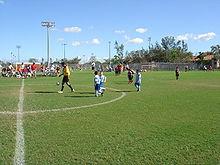
Coral Springs does not have any professional sports teams, but has more than 25 amateur sports leagues. Coral Springs Youth Soccer had more than 3300 players in their 2006 season, playing for 284 teams in 20 separate leagues, divided by age group and sex. The Honda Classic golf tournament was played at the TPC at Eagle Trace from 1984 to 1991 and 1996 and then at the TPC at Heron Bay from 1997 to 2002. The short-lived professional soccer team Coral Springs Kicks (USISL) was based in the city.
The regional Sportsplex has a jogging path, an aquatic center, tennis courts, ice rinks and a dog park. The NHL's Florida Panthers call the Saveology.com Iceplex, part of the Sportsplex, their official home and conduct much of their training there. The International Tennis Championships aean ATP International Series men's tennis tournament was held at the Sportsplex from 1993 to 1998.
Eight professional athletes are from Coral Springs: MLS soccer player Stephen Herdsman, Latvian Higher League soccer player Nate Weiss, and NFL football players Dan Morgan, Todd Weiner, Darius Butler, Steve Hutchinson, and Cody Brown. and Three NCAA athletes hail from the city: sprinter Walter Dix, Florida Atlantic University baseball player Robbie Widlansky, Major League Baseball Player Anthony Rizzo of the Chicago Cubs, and University of Notre Dame football player Sam Young.
Several athletes who participated in the 2008 Olympic Games in Beijing, China are from or currently living in Coral Springs, including Beach Volleyball gold medalist Misty May-Treanor, swimming silver medalist Dara Torres (who resides in neighboring Parkland, Florida but trains in Coral Springs), and sprinting bronze medalist Walter Dix.
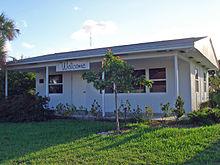
Coral Springs is a part of the Miami-Fort Lauderdale-Hollywood media market, which is the twelfth largest radio market and the seventeenth largest television market in the United States. Its primary daily newspapers are the South Florida-Sun Sentinel and The Miami Herald, and their Spanish-language counterparts El Sentinel and El Nuevo Herald.
The city is home to two local weekly newspapers, the Coral Springs Forum and Our Town News. Both publications focus on local issues and human interest stories. The Coral Springs Forum was founded in 1971 by local high school students, the publication was sold after their graduation to local residents. Later the company became a subsidiary of the Tribune Company, the South Florida-Sun Sentinel publisher.
The Coral Springs Center for the Arts opened in 1990. Originally planned to be a gymnasium, a US$4 million renovation in 1996 added a 1,471 seat theater. The theater presents a program of popular shows and a yearly Broadway series. The 8,000-square-foot (700 m2) Coral Springs Museum of Art has a small number of exhibits and focuses on art classes and programs for the local community. There is currently one public library in the city, the Northwest Regional Library, affiliated with the county-wide Broward County Library system. The band New Found Glory hails from Coral Springs and was formed in the city.
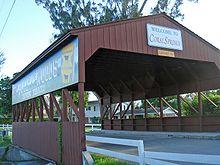
The "Our Town" Festival has been continuously held since 1979, first sponsored by the Coral Springs Chamber of Commerce, and promoted by a non-profit organization since 1997. The event has a car show, a beauty pageant and carnival rides. The festival attracted more than 100,000 attendees in 1984, and the city estimated 200,000 visitors at the 1990 event. A parade was added to the event in 1985; since 1994, the parade has been run as a separate event during the Christmas season. Several other festivals are held throughout the year, such as "Fiesta Coral Springs", a Hispanic culture celebration, and the Festival of the Arts. At Coral Springs' 25th Anniversary Party, the Guinness World Record for "Largest Hamburger and Milkshake" was broken on July 10, 1988. The hamburger measured 26 feet (8 m) in diameter and weighed 5063 pounds. The record stood for just over a year.
Coral Springs has two designated Florida Heritage sites. The Coral Springs Covered Bridge was the first structure built in the city, in 1964. The steel bridge, 40 feet (12 m) in length, is the only covered bridge in Florida in the public right-of-way. The American Snuff Company provided two historical designs for the bridge sides, to make the structure appear aged. The Covered Bridge is depicted in Coral Springs' seal. The Museum of Coral Springs History started as a real estate office. Built outside the city limits, the single-room wooden structure was moved to Coral Springs and became its first administration building. Later it was used as the first police station, and as a Jaycees clubhouse; it was moved to the city dump in 1976, where it was used as a fire department training site for smoke drills. After it was inadvertently set on fire, public outcry prompted the building's relocation to Mullins Park for restoration. Since 1978, it has housed the city's history museum. The exhibits in the museum are historic items and city models.
Coral Springs is a sister city of ParaRso, Costa Rica.
Word Count: 4119





